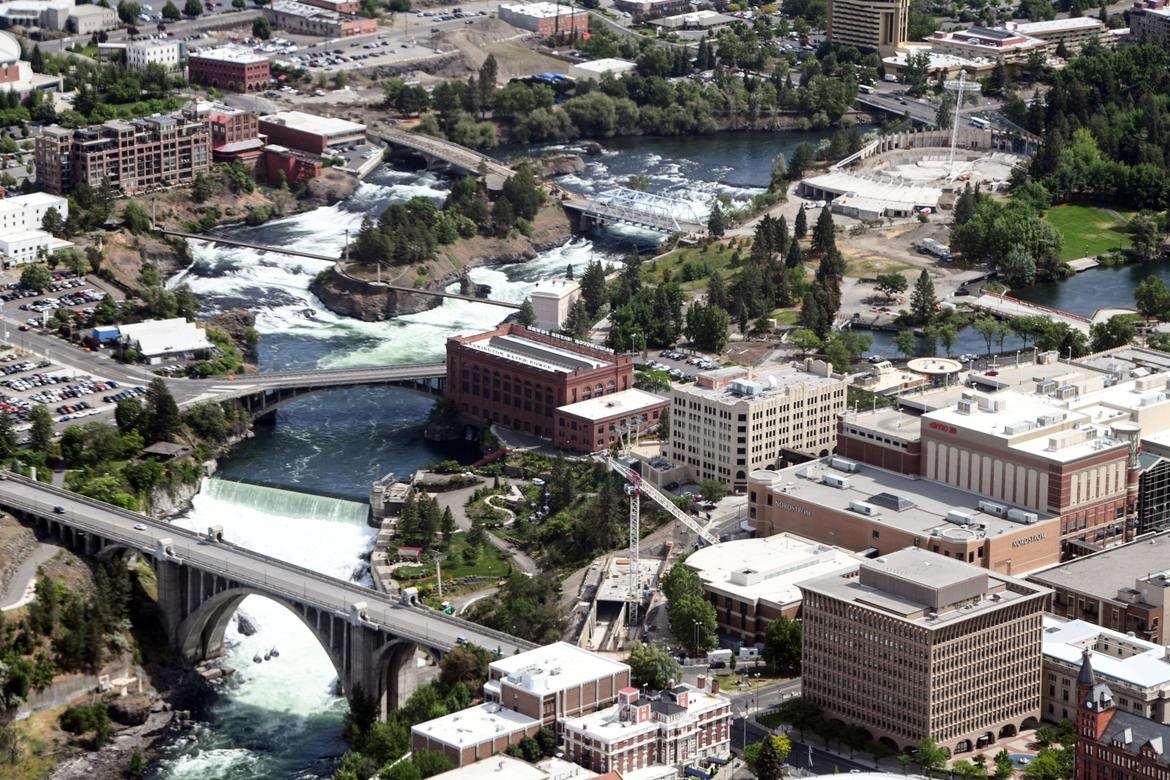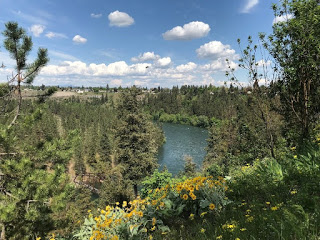
Ecology opens rulemaking to tackle PCBs
A little over a year ago, our blog addressed water quality issues in the Spokane River. While the same challenges remain, we’re working toward solutions with Spokane community groups, regional tribes, and facilities that discharge into the river.
A look at water quality standards
Facilities discharging into the Spokane River must meet Washington State water quality standards, which were revised and strengthened by rule in 2016. These rules can be complicated — there are 192 chemicals, all with their own calculations and complexities. The five wastewater dischargers on the Spokane River are currently operating under administratively extended water quality permits that do not include current standards. We are in the process of updating these permits to include current standards.
The Spokane River flows for 111 miles, through urban and rural areas.
Historic uses of PCBs and legacy contamination contribute to ongoing elevated levels in the Spokane River. PCBs are well-documented in the region. More than 20 studies of the river have sampled fish, sediment, sludge, and ground and surface water, as well as effluent from permitted wastewater facilities for PCBs. We continue to have fish consumption advisories for the river from the Washington Department of Health due to PCBs in fish tissue.
Where we are today
In Washington, the water quality standard for PCBs is seven parts per quadrillion (often written as 7ppq). It’s hard to visualize such a minuscule amount, and it’s also difficult to reliably measure.
There are five facilities that have permits to discharge wastewater into the Spokane River in Washington. We are working with the dischargers on a path to meet the water quality standard for PCBs through step-by-step reductions via a variance. All five dischargers, three municipal and two industrial, applied to Ecology for a variance:
- Liberty Lake Sewer and Water District - Water Reclamation Facility
- Kaiser Aluminum Washington LLC – Trentwood
- Inland Empire Paper Company
- Spokane County Regional Water Reclamation Facility
- City of Spokane – Riverside Park Water Reclamation Facility
A variance is a time-limited tool within federal and state water quality regulations that could allow dischargers to continue reducing PCBs through pollution minimization plans and the use of the best feasible technology until they reach Clean Water Act permit limits. Under the terms of a variance, the highest attainable condition must be maintained throughout the entire process. It is not a ‘free pass’ from meeting the water quality standards.
This is the first time Ecology has received applications for variances, and we’ll be asking for public involvement throughout the process. The U.S. Environmental Protection Agency must also approve each variance we adopt before it can be used for wastewater discharge permitting.
Community partnerships
Aerial view of the Spokane River flowing through Spokane.
Even as we continue to reduce the amount of PCBs entering the water through treatment methods, we must also work toward preventing PCBs from entering the waste stream in the first place. This requires green chemistry, re-engineered products that contain no PCBs, and other mitigation efforts to keep existing PCBs from reaching our wastewater systems. The Spokane River Regional Toxics Task Force is working to address many of these issues.
Next steps
We are currently looking for feedback on the scope of the Environmental Impact Statement for the rulemaking from June 12 to July 2, 2019.
We plan to issue a proposed rule for comment in Summer 2020. After evaluating the feedback we receive, we will decide on incorporating the variance into the five permits.
To learn more about the rulemaking, visit the water quality rulemaking page.



